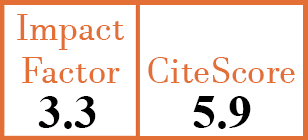Full Papers
Rheumatoid arthritis-associated interstitial lung disease: clinical characteristics and mortality in a large single-centre cohort
R.A. Namas1, M. El-Kaissi2, E. Memisoglu3, S. Khan4, S.S. Al Qassimi5, M.A. Omair6, J. Chapman7, O. Kanwar8, A.M. Almarzooqi9, J.A. Al Saleh10, A. Mubashir11, M.F. Elarabi12, D. Khanna13
- Division of Rheumatology, Department of Internal Medicine, Cleveland Clinic Abu Dhabi, United Arab Emitates. namasr@clevelandclinicabudhabi.ae
- Imaging Institute, Cleveland Clinic Abu Dhabi, United Arab Emirates.
- Imaging Institute, Cleveland Clinic Abu Dhabi, United Arab Emirates.
- Respiratory Institute, Cleveland Clinic Abu Dhabi, United Arab Emirates.
- Division of Rheumatology, Department of Internal Medicine, Cleveland Clinic Abu Dhabi, United Arab Emitates.
- Rheumatology Unit, Department of Medicine, King Saud University, Riyadh, Saudi Arabia.
- Respiratory Institute, Cleveland Clinic Abu Dhabi, United Arab Emirates.
- Research and Academics, Cleveland Clinic Abu Dhabi, United Arab Emirates.
- Department of Rheumatology, Al Qassimi Hospital, Emirates Health Services, Sharjah, United Arab Emirates.
- Department of Rheumatology, Dubai Hospital, Dubai Health, Dubai, United Arab Emirates.
- Division of Rheumatology, Department of Internal Medicine, Cleveland Clinic Abu Dhabi, United Arab Emitates.
- Division of Rheumatology, Department of Internal Medicine, Cleveland Clinic Abu Dhabi, United Arab Emitates.
- Department of Rheumatology, University of Michigan, Ann Arbor, MI, USA.
CER17861
2025 Vol.43, N°3
PI 0425, PF 0434
Full Papers
PMID: 39932782 [PubMed]
Received: 22/05/2024
Accepted : 18/09/2024
In Press: 11/02/2025
Published: 12/03/2025
Abstract
OBJECTIVES:
Interstitial lung disease (ILD) is a severe pulmonary complication observed in Rheumatoid Arthritis (RA) patients and is a leading cause of mortality within this population. The objective of this study is to provide a comprehensive comparative analysis of a real-world observational cohort, distinguishing between patients with and without ILD. This analysis encompasses various aspects including sociodemographic, clinical, biological, and radiological factors.
METHODS:
A retrospective chart review was conducted from April 2015 to April 2021, including all patients diagnosed with RA according to the 2010 American College of Rheumatology/European League Against Rheumatism (ACR/EULAR) classification. Demographics, clinical characteristics, laboratory markers, and treatment data were retrieved from electronic medical records. Multiple regression analyses were performed to investigate the risk factors associated with ILD in RA patients.
RESULTS:
The study enrolled 153 RA patients diagnosed with RA, with 53 having RA-ILD and 100 without ILD. Multivariable analyses were conducted, treating ILD presence in RA patients as the dependent variable in RA patients, revealing notable associations. Smoking status (OR=8.82), presence of rheumatoid factor (OR=4.98), elevated Disease Activity Score-28 for RA with CRP (DAS-CRP) levels (OR=2.05) were all significantly associated with ILD presence in RA patients.
CONCLUSIONS:
This study underscores the substantial association between serologies, disease activity scores, and smoking history, contributing to the heightened susceptibility to ILD in RA patients. Recognising these risk factors and instituting systematic monitoring of routine disease activity metrics would facilitate targeted strategies for early detection and intervention.


